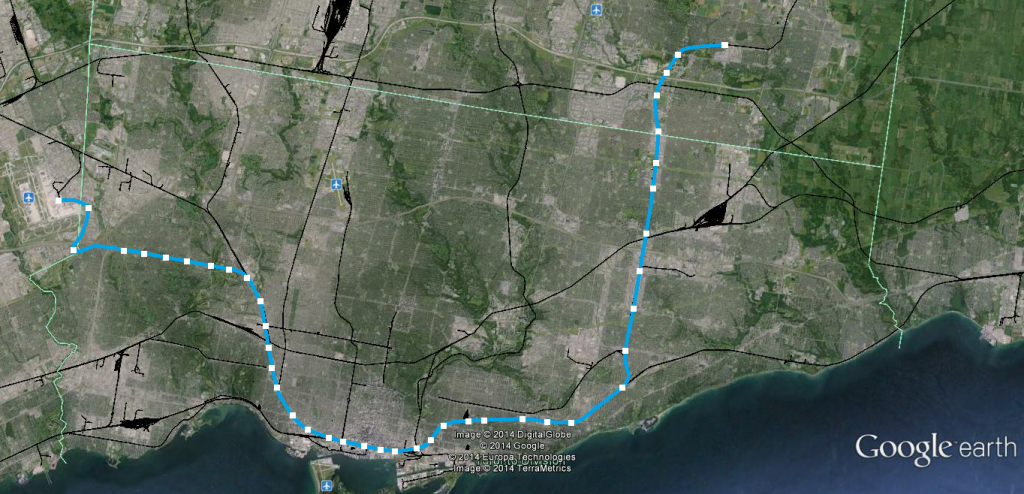So I did some work on my transit map which was posted on the DRL thread. Mostly aesthetics, small adjustments, showing a completed line to St Andrew, and the addition of Laird/Millwood station. I have another copy, where in the blank space I included a lot of photographs of similar needed infrastructure. Looked a bit messy though.
View attachment 33757
One reason I wanted to include many images is to show how commonplace and realistic many of my DRL components are - even within Toronto. The UPX and Georgetown South project is of interest because a rebuilt span over the Humber shares a lot of similarities to the Don Valley's Half-Mile Bridge, which forms the basis of my proposal to traverse the valley. Also included were rapid transit flyovers, which would be used to cross over the DVP; as well as concrete viaducts, like currently seen at Old Mill station.
Another project which could be built in conjunction is the Leaside Bypass, where Redway Rd is extended from Millwood to Bayview, offering Leaside residents calmer streets and road network improvements.
Utilizing the abandoned Don Branch corridor seems like a no-brainer; cost and time-savings being the key reason. The Metrolinx proposal of a DRL from St Andrew to Don Mills is 11.9km and costs $5.9bn (2012). A basic measurement of my Don Line comes in at 10.3km, with evident savings offered. Maybe I deluded myself a bit, but it looks promising to me at the moment.








